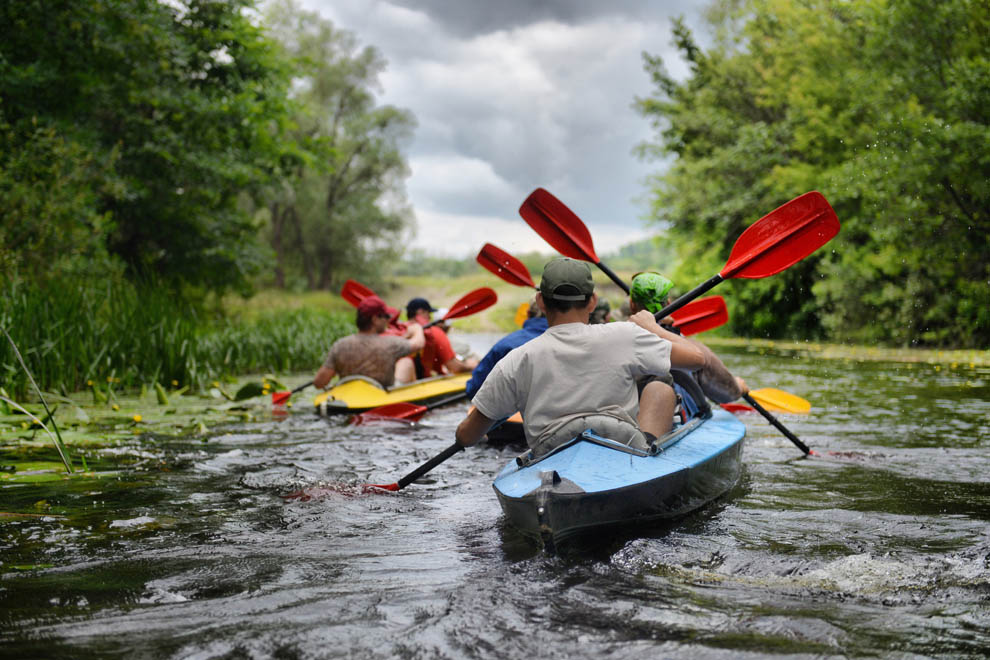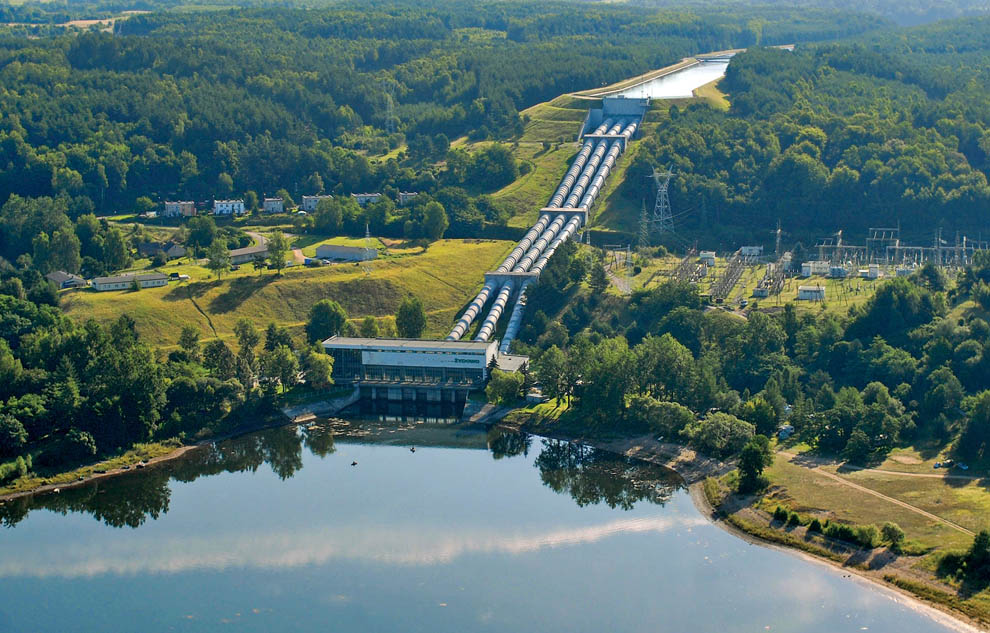ATTRACTIONS AND SURROUNDINGS
Our Attaactions and charm of neigbourhood

For the fans of active recreation
The villas are surrounded by a forest, ponds and lakes; all the area will certainly satisfy the needs of runners, Nordic walkers, cross-country skiers, as well as cyclists. The routes, both in the wild, as well as marked ones will give everybody their own path to follow.
For mushroom pickers/fishermen/hunters
“Rezerwat” is an enclave for the lovers of mushroom picking, fishing and hunting (“Dzik” PZW Hunting Club no. 057 in Polanów), as the surrounding areas are abundant with flora, mushrooms and wild game.


For kayakers
From the road bridge on the road from Wieleń to Polanów, up to Buszyn, we prepared a kayaking route as part of the Forest Tourist Complex of Polanów Forestry Management. This does not change the fact that the river is still demanding and that the 7-kilometre trip takes anywhere from 4 to 6 hours, making it a perfect choice for everybody who wants to fight against nature – the strong current and felled trees in the riverbed.
For history buffs.
Near “Rezerwat”, you will find the historic Church of Christ the King from 1669 with a fully restored Baroque altar, which holds Masses on every Sunday, as well as wedding ceremonies.


For lovers of modern solutions.
The only pumped-storage power plant of its kind in Poland, using the 80-metre difference between Kamienne and Kwiecko Lakes. The lakes were connected by three steel pipes with a 5-metre diameter each. Every second, 240 cubic metres of water go through the turbines, generating up to 156 megawatts of energy. During the night-time energy surplus, two reversible turbo-units pump back three million cubic metres of water to the main lake.
Additionally, the region offers numerous monuments and museum sites:
The Red Bridge – a 120-metre steel bridge over Grabowa River on the Polanów – Korzybie railway dismantled by Russians in 1945.
Church of the Assumption of Blessed Virgin Mary – the largest building in Polanów, erected in the 18th century, with a late-Gothic tower. It was built to replace a church that burnt down in a fire of 1736. In 1850, the church was rebuilt and expanded. Inside you will find the side balconies, as well as a neo-Gothic main altar and water basins. Among interesting things there is also the Wrangel coat of arms, located on the wall of the southern choir gallery, as well as the epitaphs of Fryderyk and Eleonora Wrangel, buried there in 1805. On Sławieńska Street, you can also find a filial church, opened in 1912 for a small Catholic parish in Polanów.
Święta Góra (156 m a.s.l.) is located 2 kilometres south-west from the city, near the Forestry Management Office. At the beginning of the 14th century, the friars built a chapel with a painting of Blessed Virgin Mary. The miraculous painting and the alleged healing properties of the water from the spring at the foot of the mountain attracted hundreds of pilgrims. After the Reformation took hold, the pilgrimages to Polanów continued until the end of the 16th century. Over time, the chapel fell into ruin. Today, visitors can still find small pieces of Gothic bricks and the place where the foundations used to be shows the dimensions of the church. In 1996, the area was taken over by the Church and in 1999, by the Franciscan pilgrimage centre. The cornerstone was blessed in Pelplin by Pope John Paul II during his pilgrimage to Poland in June 1999. The shrines and signage on the pilgrimage route from Chełmska Góra (Koszalin) to Święta Góra Polanowska have already been finished, along with a Franciscan hermitage, the architecture and design of which refer to the traditional wooden buildings from Southern Kashubia.
Warblewska Góra (170 m. a.s.l.) – a mountain which used to be called the “Great View”, one of the tallest mountains around the city, which used to house a restaurant, an observation terrace and hiking routes. In the 1980s, a ski lift was constructed on the western slope – sadly, it does not exist anymore. Currently, the Active Recreation Centre is slated for construction, with a viewing platform, ski lift and a toboggan run.
Krąg – a former feudal manor belonging to the Podewils family, located near the route to Sławno. The castle and the park complex was established in early 15th century, after which it was rebuilt several times, and in 1580, it was torn down to the foundations and rebuilt once again in the Renaissance style. The form refers to the Castle of Pomeranian Dukes in Szczecin. In 1890, the western wing of the castle was constructed. Before the war, it was known as a Flower Palace owing the name to the flower gardens. The park still contains the Podewils castle chapel with Baroque interior from the 16th century.
